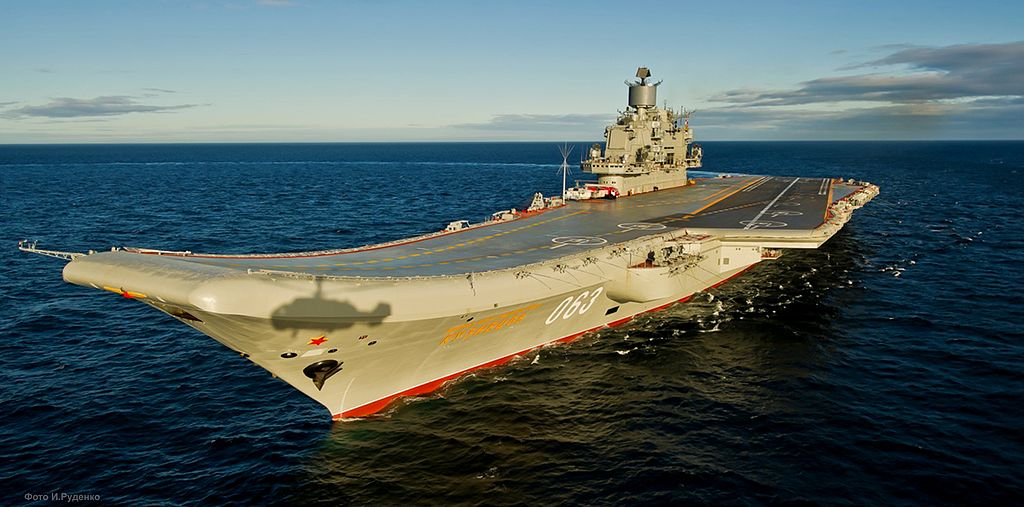It’s pretty unbelievable that in a day and age where the ability to project real power is determined by the number of aircraft carriers and support ships in a country’s arsenal, Russia is still vaunted and feared as a force to be reckoned with.
The credit for that would definitely have to go to the Russian Army, because the Russian Navy is definitely not the reason why. At sea, the Russians would have to rely on their missile submarines, because its aircraft carrier, the Admiral Kuznetsov – the only aircraft carrier – isn’t going to finish the fight.
It might not even make it to the fight.
Here are 5 reasons why Russia’s only aircraft carrier is a seagoing joke
1. Its most important support craft is a tugboat.
Rodney Dangerfield used to joke about how terrible his car was and that one day, he would buy the perfect second car: a tow truck. That’s exactly what the Russian Navy does with the Kuznetsov, the carrier that never leaves port without its ocean-going tugboat, because having to hire a foreign tugboat would be embarrassing.
The Kuznetsov breaks down so often that it has to be towed to port to make proper repairs, and that’s just the process of getting the ship from Point A to Point B. The carrier breaks down before it ever gets close to its mission area.
2. It can’t really carry that many aircraft.
Some might argue that the Admiral Kuznetsov was built for a different kind of oceangoing aircraft carrier mission, as a hybrid missile cruiser. It was designed to put air superiority fighters in the air while firing missiles at NATO ships in the ocean somewhere, all in the interest of protecting the Russian submarine fleet.
The problem with trying to do more than one thing is that usually people end up doing neither thing very well. The missiles being held in the Kuznetsov means fewer aircraft while fewer aircraft means less protection for that submarine fleet.

3. Russians don’t have a lot of experience with carrier operations.
Having only one carrier means that naval aviation skills are extremely limited in the Russian military. This means its most advanced aircraft are usually unsuitable for operations on a carrier built in 1990. It also means the planes have to be able to take off on their own power and land with an arresting cable, a process that requires skill, even in peacetime. They’re lucky they’ve never had to do it in combat.
The result of a lack of training and maintenance in carrier operations mean the Kuznetsov routinely experiences at-sea mishaps and accidents that mean the loss of aircraft and pilots – and that is exactly what happens.
4. It’s old but that’s not an excuse.
Kuznetsov may have been designed by Soviet engineers and launched before the fall of the Soviet Union, but by all accounts, that should be a good thing. Russia’s carrier should have been made at the height of Soviet technology but instead it looks like you’d need a tetanus shot just to come aboard.
The reason for this is maintenance. American and NATO crews can keep a carrier in superb shape for half a century (the USS Enterprise was retired in 2012, after 50 years) because of maintenance and training. Remember that the next time you question why you have to clean something.
5. Even the Russian sailors hate it.
Being assigned to the Kuznetsov is a punishment akin to getting sent to the Eastern Front during World War II. It’s a diesel-powered carrier, so it requires regular refueling when it does work. But that’s not the only thing that doesn’t work. What doesn’t work makes it a nightmare for the crew.
The boilers are as faulty as the engines, which means there’s no heat during its oceangoing voyages. The ventilation system is rumored to be only 60% effective, so they have to seal areas of the ship overwrought with diesel fumes and what isn’t exhaust-filled is mildew-filled. All this for a ship that is mostly ineffective.


